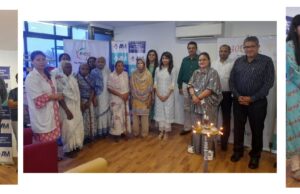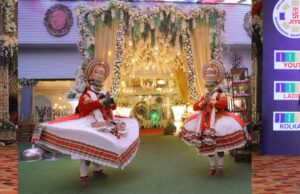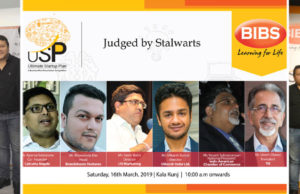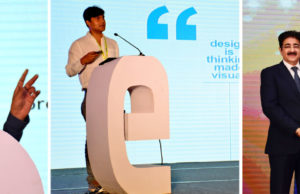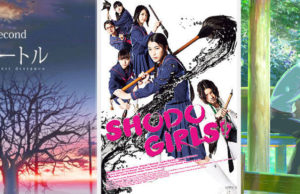
WoT's Hot
Lazing through my Facebook posts on Saturday morning, sipping tea,I noticed a post by Vibha Mitra of Sutradhar ~ Qissaa, a store for the Indian diasporawhich caught my attention. She wrote in her post: "Kolkata let us put our best foot forward and do what the city of joy does the best. Appreciate the artisans and skill and beauty of Tamil Nadu’s handwoven textiles.An unforgettable experience from the Cooptex team led by Venkatesh Narasimhan. All roads lead to ICCR." That is the moment I decided to just drape my best saree and rush off to ICCR in time.
What I experienced there was more than words can express. There was silk, colors and a wide range of visual delight. I had stopped listening and was just overwhelmed by the exhibition that met my eye. When I settled down finally to listen to Venkatesh Narasimha, an IAS Officer and the MD of Cooptex did I realize that there was more to the beauty of the sarees that met the eye.Cooptex had brought to The Royal Gallery in ICCR, Kolkata,a specially curated collection of handwoven sarees. There was on display a whole range of Weavers Silks, Cottons, Tie n Dye Sarees, Stoles, Readymade and Home Furnishings, woven from clusters from all across the state of Tamil Nadu.
The detailed presentation was made which explained the work with weavers and revival stories about the temple girls and the three borders, the M S Subbalakshmi Blue, and how this color has become associated with her, the legend of Rukmini Devi Arundale and Kalakshetra. The exhibition collection had these taken from the archives and replicated them for display.
Cooptex had brought the best from Tribhuvanam − a beautiful town,situated on the banks of Cauvery River in the Thanjavur District.
The art of weaving the pallu known as "Porai technique", and the folding called VisiriMadippu (Visiri in Tamil means"Fan") of the finished Saree are the uniqueness of Thirubhuvanam Saree. The weavers of this region are coming out with new special colors in both, the borders and pallus. Typically it takes them 6 to 10 days to weave these Tribhuvanam silk sarees. Cooptex has redone the Kalakshetra Saree, which was the special attraction of the event.
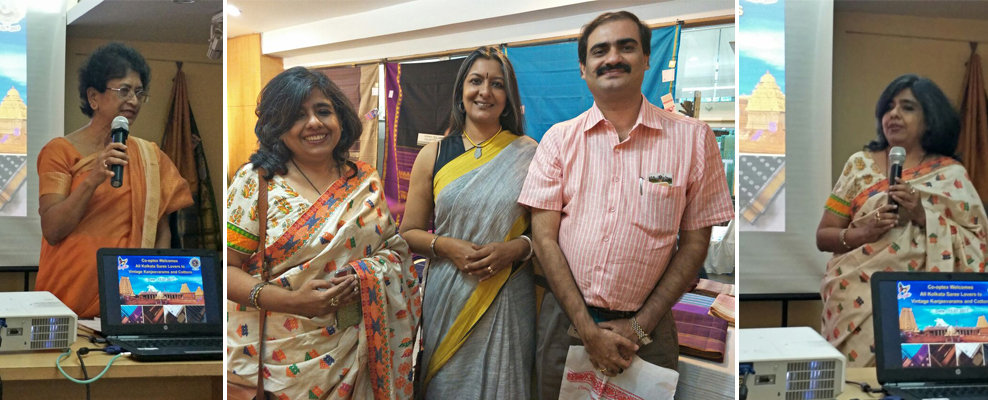
The sarees were just not for the exhibition but also for sale with special discounts which ran throughout the day. All the while the presentation was going on my eye stayed glued of a tie n dye, my favorite, which I planned to collect after the presentation was done.
This exhibition was only for a day so most my friends missed it and all I could do was share with them my experience. I collected a few Arani Sarees for them which were customized for office wear and I learnt that these sarees which took five days to weave were based on color palettes given by Cooptexand have Zero-Zari or arelow on Zari and mostly made from thread work. Very Contemporary and light-weight, these were ideal for office wear. The new shades and colors are easy on the eye and are very trendy.
The vintage Kanjeevarams were stunning as usual but so were the cottons. It was however sad to learn that behind the beauty that was unfolded before my eyes there was yet another truth about the weavers who were just about 1,50,000 now and were fading out due to lack of support from buyers. If these handwoven sarees,which were so appreciated and admired, were not purchased, the art of weaving them would soon become extinct as would the weavers who would soon migrate to some other more lucrative industries for their survival.
Each saree was a work of art and reflected the quality of the silk used to make them, the right mix of colors, the careful weave and the final glory of each piece on completion. The weaver had put all they had in their expertise and sense of beauty and transformed it to each saree displayed. There was every shade of color that you could ask for – from bright pinks, parrot greens, cobalt blues, deep brick reds, vermillion to deep purples. When matched with gold jewelry, this promised to turn you into the most beautiful woman of the day.
The fact that you were wearing something so special, handwoven and gorgeous added to the brightness of the saree. The range of fabrics and designs on exhibition was certainly making it very difficult for me to choose from.
One of the specialties in abundance was the Madurai Sungudis. These are purely handwoven Sarees in 100% Cotton. Madurai has been the major center of Sungudi Sarees because of the Vaigai River that is suitable for the process of resist printing and dyeing.The key features of this process are that: they use wax as a resist dyeing mediumand Napthol dyes for natural fibers like cotton! The block prints on these sarees are an added attraction. These Sarees give the wearer a very elegant look and make you stand out in elegance be it rain or sunshine
I noticed that the others present with me were having the same problemsin selecting one or two individual sarees. I, infact, helped another visitor who was unable to make a selection for her mother, with a Kanjeeveram that she finally selected. It was a wonderful and interesting evening especially when Kasturi Gupta Menon of Crafts Council was present beside other excited buyers and lovers of beautiful unique sarees from the southern region of our country.
The spellbound visitors were presented with Kanchipuram, Arni, Salem, Air India sarees, Kattams (checks), AyiramButtis (thousand butties, no more no less), Puttinam (raindrops), Maahil (peacock), Chakram, Yazhi (horse), Rudraksham, Dindigul, Korvai, Petni. I learnt about the names and the history of each of them.
Cooptex, along with the effort of Venkatesh Narasimha had brought the Romance of the Kanjeevarams and Cottons to the City of Joy, Kolkata. I agree with what Vibha Mitra wrote in her Facebook post “Let us resolve to wear a hand woven handloom with pride. Let us support a weaver!A connect with the past and a way ahead for the future!”
Lazing through my Facebook posts on Saturday morning, sipping tea,I noticed a post by Vibha Mitra of Sutradhar ~ Qissaa, a store for the Indian diasporawhich caught my attention. She wrote in her post: "Kolkata let us put our best foot forward and do what the city of joy does the best. Appreciate the artisans and ski
Other Articles in REAR WINDOW WOT
What to read next
Featured articles

Welcome Festive Season in Glam, Latin Quarters Launches new #PujoBling Collection with Monami Ghosh
by WOT




































